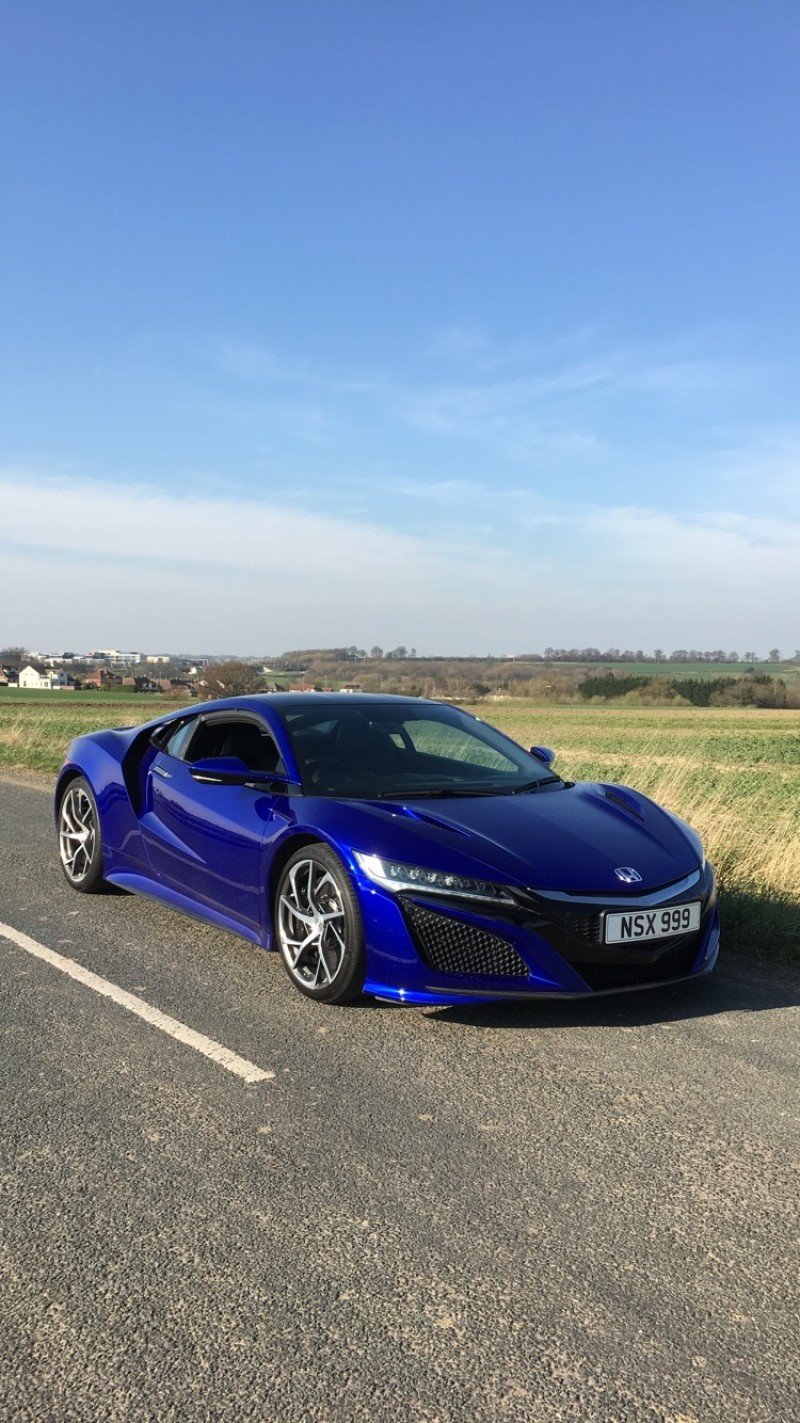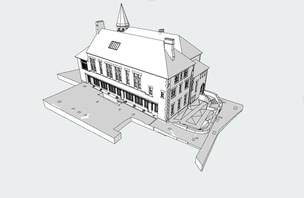IF you’re lucky enough to be in the position of spending a six-figure sum on a car - something most can only dream of - the world’s your oyster. Supercars of old used to be fragile things, constantly on the brink of an expensive meltdown, and could only handle 20-degree heat and dry roads but today’s breed are a much-changed proposition.
Manufacturers such as Ferrari, McLaren and Porsche have the market pretty much cornered, with each representative - whether it’s the 488 GTB, 570S or 911 Turbo S respectively - offering genuine 365-day usability. Add the Audi R8 into the equation and you'll see the breadth of what's on offer, and that's before you get to the Lamborghini Huracan.
Porsche’s indomitable 911, thanks to its four-wheel-drive set-up in Turbo S guise, has been lauded as the ultimate daily supercar for as long as the mind can recall but a wildcard - Honda’s reborn NSX - is something that’s tugging at the familiar Porsche’s coat tails and it just won’t let go.
I know what you’re thinking and it’ll probably be something about Honda - a reliable manufacturer known for its Civics - not being worthy of such expenditure. You’d be wrong if you’re that way inclined because the Japanese marque’s got history, lots of it, and deserves to be taken seriously even when it’s in hallowed company such as the supercar elite.
The NSX is one of the cars of my youth. Gordon Murray, of McLaren F1 fame, drove one whilst developing his icon and said all other benchmarks vanished due to how astonishing the Honda was.
Having been a little too young to remember the pop-up headlight original, honed by the late, great F1 world champion Ayrton Senna no less, the facelifted version which arrived when I was 12 immediately struck a chord with me. That was because of two things: a naturally aspirated 3.2-litre engine and a manual gearbox. Strangely the V6 made just 276bhp, but it was the way the NSX sounded, looked and was absolutely focused on its driving experience that resonated as soon as my impressionable eyes focused on its distinctive shape.
When Honda announced that it was producing a modern-day version carrying the same hallowed letters, I’ll admit that I was little apprehensive. More than a decade had passed and in that time supercars had become fire-breathing monsters - McLaren had come back into the equation with its twin-turbo V8 and Ferrari had ditched its naturally aspirated engines and followed suit.
The new NSX costs £150,000 before options but tick a few boxes which have the alluring words of ‘carbon fibre’ beside them and you’ll easily add tens of thousands on top of that. You’ll be thinking that that’s madness - it’s only a Honda after all. If I had a pound for each time I heard that totally misguided riposte during my spell with it I’d maybe able to afford one - people who don’t appreciate cars seemingly can’t get past its badge. It’s a crying shame because those who are in the know would probably concede it’s cooler than just about all of its rivals because it’s so incredibly unique.
It’s got all of the usual supercar ingredients, but Honda’s done it a little differently. There’s a 3.5-litre V6, two turbos and three electric motors, all combining to create a headline figure of 572bhp. That’s good enough to hit 60mph in under three seconds, and a near-as-makes-no-difference 200mph top speed. A 'miniature Porsche 918' is one statement that's been bandied about and it's not hard to see why.
You approach it while drinking in all of its supercar intricacies, the small details that help towards justifying its price tag - the ones ordinary cars simply don’t have. You pick up on the headlights - six LED balls of bright white light - and the expensive, evocative weave of its low-slung carbon splitter. It’s low, very low, sitting at 120cm tall and you’ll see on closer inspection that the giant central exhaust surround, which is cocooned by its carbon diffuser, houses quad-exit pipes. It’s beautiful, unique and absolutely gorgeous to look at. Everything’s there for a reason and has been incorporated by clever engineers, not marketing bods who like to insist on pointless, stuck-on addenda. A proper supercar.
Open the driver’s door, when you’ve figured out how to with its space-age handle which pops up when depressed, and you’ll be a little disappointed after the sheer brilliance of its looks outside. There’s too much familiarity - infotainment graphics straight from a Civic and plastics nicked from a CR-V parts bin - and at first it simply doesn’t feel its price. Get settled and you start to feel like you’re in something special; the sculpted wing mirrors are beautiful and give a perfect view of the side air intakes, which suck in air for the engine that’s several inches behind your head. You take one look in the mirror, see the gaping chasm and just smile.
The steering wheel is topped with optional carbon fibre and has just the right amount of buttons to not be considered annoying, but ultimately the sense of occasion is not heightened by the overall, lacklustre design. It’s a momentary thought, though, because a prod of the starter button is all that’s required to remedy any lingering frustration.
Your ears are met with a purposeful noise reserved for high-powered engines. It thrums and its start, at least when its vital fluids are cold, is a neighbour-angering event - just up my street. Turbochargers have a tendency of diluting the orchestral drama of what should be a fundamental part of the supercar experience but the NSX sounds fantastic and you know, when you’re moving, is something that’ll just get better the more revs you indulge in.
It’s a simple process to do that - there’s nothing intimidating other than those never-ending wing mirror stalks. It's wide, but luckily not too wide. It has a semi-automatic gearbox, so it’ll perform perfectly when you leave it to do its own thing, which is what I did for the first few minutes. You can take control whenever the mood takes you by pulling one of its paddleshifters. A lot has been said about the quality of these and yes, it’s true, they do feel cheap and nasty. A few slithers of carbon fibre would improve things no end and given the lack of a manual gearbox takes the driver somewhat away from the process, it's something that Honda should have given a bit more thought.
However, there’s nothing quite like a mid-engined car as they feel special as soon as you show them a corner. The way the weight - and there’s a considerable chunk of it in the near-1,800kg NSX - is distributed just feels right. The NSX is 42:58 rear-biased so it’s playful, although the safety net of the faultless four-wheel-drive system is most definitely welcome. The gearbox itself is a peach and is a fantastic match for the engine. It has nine speeds which is perhaps overkill as you often find yourself in a too high gear, but the sheer violence of its acceleration in any ratio is phenomenal. Third gear, primed at let's say 30mph, is astonishing. I never found myself craving a clutch pedal and a stumpy thing in between the seats because there's so much power to think about.The engine revs to 7,500rpm and produces peaks of 500bhp and 406lb ft of torque. Fixed to the V6 is a 47bhp electric motor, and behind that is the dual-clutch gearbox, all of which drive the rear wheels, helping to catapult the NSX out of the corner. It’s gobsmackingly fast; the noise builds and there’s no let up in the power delivery, even at the top end. It’s a full-on turbocharged hit of pure pace. Two 36bhp electric motors sit at the front, one driving each front wheel and give the NSX a vast array of torque-vectoring properties which is far too complex for me to get my head around and even attempt to explain like I'm even slightly in the know. The electric motors also give the car a unique property of driving silently when you’re around town or in traffic, helping fuel consumption which incidentally, on a decent run, hovers around the 30mpg mark. A supercar that returns 30mpg...
The steering isn’t exactly brimming with feel but it’s a system that requires minimal input and seemingly the slightest command is acted on immediately. You pitch it in, it grips, and the added bonus of a limited-slip differential means it’s never scrabbling for traction when you want its power. The brakes, which are optional carbon ceramic items costing £9,000, are predictably brilliant. They ought to be, really, and although their stopping force is incredible, it’s the brake pedal’s bite, its feel, which shines thanks to the perfect modulation.
We’re blessed - or cursed - with hugely clever cars in 2019 but some technology is an absolute disaster, becoming nothing other than a hindrance for the driver’s enjoyment. In the NSX the tech, of which there’s a lot, somehow gels together to create a compelling, unique supercar that's both useable and jaw-droppingly fast, never once getting in the way of the experience.
It’s a special car, the NSX. It’s far-removed from its predecessors and what they represented but Honda’s risk in using the famous moniker is unquestionably justified. It is that good.





























